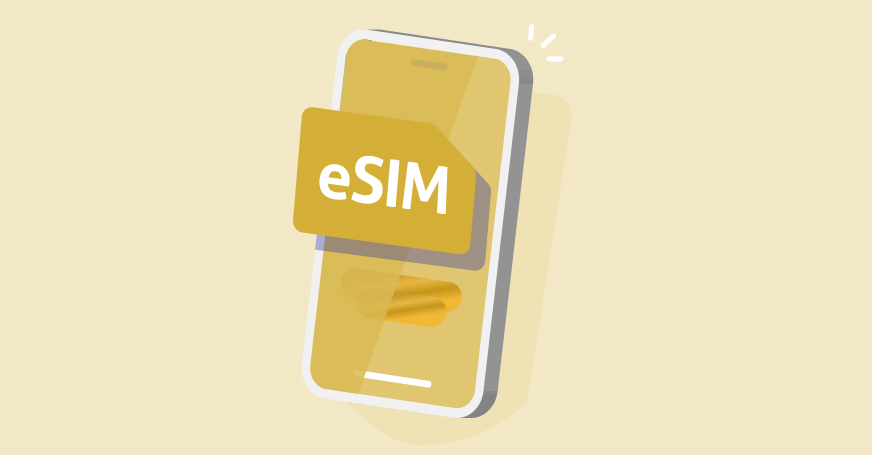What Is VoLTE and Why Does It Matter for Your Calls?
Remember the days when making a call meant sacrificing your internet connection? Thankfully, those days are behind us. Thanks to VoLTE, or Voice over LTE, calling has transformed into a faster, clearer, and smarter experience.
But what exactly is VoLTE, and why should you care about it? Let’s break it down in simple terms.
What Exactly Is VoLTE?
VoLTE stands for Voice over LTE, which means your voice calls travel over the 4G LTE data network instead of the older 2G or 3G voice networks.
In practical terms, this means clearer, higher-quality audio and the ability to browse, stream, or text while talking on the phone.
Behind the scenes, VoLTE relies on a framework called the IP Multimedia Subsystem (IMS). This system manages voice calls as IP data while guaranteeing quality and reliability — it’s what makes VoLTE more than just another voice-over-internet service.
How Does VoLTE Work?
Traditional cellular calls used circuit switching, where a dedicated connection was reserved for your entire call. VoLTE uses packet switching, breaking your voice into small data packets that travel across the LTE network and reassemble at the other end — all in milliseconds.
When LTE coverage weakens, networks often use Single Radio Voice Call Continuity (SRVCC) to hand the call over to 3G or 2G without interruption. This ensures calls stay connected even if LTE signal drops.
Why VoLTE Matters for Everyday Calls
Clearer audio quality: VoLTE supports HD Voice (wideband audio codecs like AMR-WB), which delivers natural-sounding conversations with less background noise.
Faster call setup: Calls typically connect more quickly than on older 3G or 2G systems.
Simultaneous use: You can browse, navigate, or stream while talking — no more pausing data when you pick up a call.
Comparing VoLTE with 4G and 5G Networks
VoLTE is the foundation for voice calling over 4G networks, which otherwise only handle data.
In 5G networks, the next step is VoNR (Voice over New Radio) — a native 5G voice solution. Until VoNR becomes widely available, VoLTE remains essential, carrying most 5G voice calls through LTE infrastructure.
If you’re curious about how LTE stacks up against next-gen networks, check out this detailed guide on 4G vs. 5G.
Advantages of VoLTE
HD Voice Quality: Enjoy crisp, natural-sounding audio with reduced distortion.
Potential Battery Improvements: In many modern phones, staying on LTE instead of switching between 3G and 4G can help conserve energy — though actual results depend on your signal strength, device, and carrier.
Broad Global Adoption: VoLTE is now supported by most major carriers worldwide, making it a reliable standard for modern communication.
Potential Drawbacks of VoLTE
No technology is flawless:
Coverage Gaps: In rural or remote areas, LTE signal may be weak, reducing VoLTE reliability.
Carrier Support: Some carriers still lack full VoLTE deployment or interoperability across regions.
Device Compatibility: Older or entry-level phones may not include VoLTE or IMS support.
Battery Variability: While often efficient, VoLTE can increase battery use under poor signal conditions.
Network Dependence: Call quality can still degrade with congestion, latency, or packet loss.
VoLTE and eSIM Technology
Pairing VoLTE with eSIM technology makes mobile life more flexible — especially for frequent travelers.
Although VoLTE and eSIM are separate technologies, using both allows seamless carrier switching without swapping SIM cards, while maintaining LTE-quality voice connectivity.
VoLTE and RCS Messaging
VoLTE works well alongside Rich Communication Services (RCS) — the evolution of SMS that brings typing indicators, high-resolution media, and group chat features.
Both rely on the same LTE data framework, which ensures consistent, IP-based communication. Learn more in our guide on how RCS works.
Do All Phones Support VoLTE?
Most modern smartphones support VoLTE, but compatibility still depends on your carrier and software version.
You can check by:
Looking under Settings → Network or Mobile Settings → VoLTE, or
Contacting your carrier to confirm if your device is enabled for VoLTE service.
How to Enable VoLTE on Your Device
On Android: Go to Settings → Mobile Network (or Cellular Networks) → Enable VoLTE.
On iPhone: Go to Settings → Cellular → Cellular Data Options → Enable LTE → Voice & Data.
Some carriers automatically enable VoLTE by default or hide the toggle once it’s active.
What If Your Carrier Doesn’t Support VoLTE?
If your carrier hasn’t rolled out VoLTE yet, you have two main options:
Switch to a carrier that supports VoLTE for faster and clearer calling.
Use Wi-Fi Calling as an alternative, which routes calls over a Wi-Fi connection instead of cellular data.
Keep in mind: many networks are retiring 2G and 3G service, so moving to a VoLTE-ready carrier ensures your phone stays compatible with future voice networks.
VoLTE and International Roaming
VoLTE can deliver high-quality calls while traveling — if your home carrier and the roaming network have a VoLTE agreement.
Availability varies by country and operator, so in some places your phone may still fall back to 3G or rely on Wi-Fi calling for voice service.
The Future of Voice Calls: VoLTE and 5G
VoLTE is paving the way for the next phase of mobile communication: Voice over 5G New Radio (VoNR).
VoNR promises even lower latency, faster call setup, and improved reliability. Until it becomes widespread, VoLTE ensures a smooth transition between 4G and 5G networks — keeping voice quality consistent across generations.
Conclusion
VoLTE isn’t just a buzzword — it’s the technology powering modern voice calls. With clearer audio, faster connections, and seamless multitasking, it’s a major step forward in how we communicate.
If your phone and carrier support VoLTE, turning it on is an easy way to make every call sound — and feel — better.



.jpg)